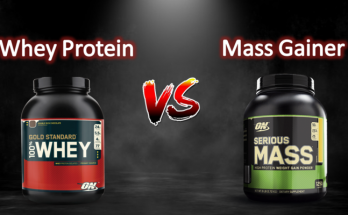If you’re diving into the world of fitness and nutrition, you’ve likely heard about whey protein supplements. Whey protein is a go-to for athletes, bodybuilders, and health enthusiasts looking to boost muscle growth, recovery, and overall protein intake. But when it comes to choosing the right type, you may find yourself stuck between two popular options: whey protein concentrate and whey protein isolate. Let’s break down the differences and help you make the right choice for your goals.
What Is Whey Protein?
Whey protein is derived from milk during the cheese-making process. It is packed with essential amino acids, making it a complete protein source ideal for muscle repair and growth. Whey protein is available in various forms, with concentrate and isolate being the most common.
Whey Protein Concentrate
Whey protein concentrate (WPC) is the least processed form of whey protein. Here’s what you need to know about it:
- Protein Content: WPC typically contains 70-80% protein by weight. The remaining content includes fats, carbohydrates, and lactose.
- Nutritional Benefits: The additional fats and carbs can provide a more well-rounded nutrient profile, including beneficial bioactive compounds.
- Cost: WPC is generally more affordable than isolate, making it an attractive option for those on a budget.
- Best For: Individuals who tolerate lactose well and are looking for a cost-effective way to increase protein intake.
Whey Protein Isolate
Whey protein isolate (WPI) undergoes additional processing to remove more fats and lactose. Here’s what makes it stand out:
- Protein Content: WPI contains 90% or more protein by weight, making it a purer form of whey.
- Nutritional Benefits: With minimal fats and carbohydrates, it’s an excellent choice for those aiming to maximize protein intake while minimizing calories.
- Cost: WPI is typically more expensive due to the additional processing.
- Best For: Individuals with lactose intolerance or those following a strict calorie-controlled diet.
Key Differences Between Whey Concentrate and Isolate
| Factor | Whey Protein Concentrate | Whey Protein Isolate |
|---|---|---|
| Protein Content | 70-80% | 90% or more |
| Fats & Carbs | Higher | Lower |
| Lactose Content | Moderate | Minimal |
| Price | Affordable | Expensive |
| Processing | Less | More |
Which One Is Right for You?
Your choice between whey protein concentrate and isolate depends on your fitness goals, dietary needs, and budget:
- If You’re on a Budget: Whey protein concentrate is a cost-effective way to increase protein intake without compromising on quality.
- If You’re Lactose Intolerant: Opt for whey protein isolate, as it contains minimal lactose and is easier to digest.
- If You’re Cutting Calories: Isolate’s higher protein content and lower fat and carb levels make it ideal for calorie-conscious individuals.
- For General Fitness: Either option can work well if you tolerate lactose and aren’t on a strict diet.
How to Use Whey Protein
- Post-Workout: Mix a scoop of whey protein with water or milk to aid muscle recovery.
- Meal Replacement: Combine with fruits, oats, and nut butter for a balanced smoothie.
- Snacks: Use whey protein in recipes like protein pancakes or energy balls.
Conclusion
Both whey protein concentrate and isolate are excellent sources of high-quality protein. Concentrate offers a balanced profile at a lower cost, while isolate provides a purer form for those with specific dietary needs. Evaluate your fitness goals, budget, and dietary restrictions to decide which one suits you best. Whichever you choose, you’ll be fueling your body with a powerhouse of nutrition to support your journey.
Start your protein journey today and unlock your full potential!
Some recommendations incorporate Creatines.


